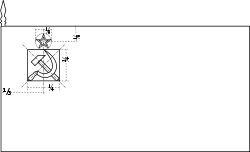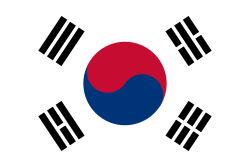Jakiv Punkin
| Jakiv Grygorovyč Punkin | |
|---|---|
| Narození | 8. prosince 1921 Záporoží |
| Úmrtí | 12. října 1994 (ve věku 72 let) Záporoží |
| Povolání | zápasník |
| Ocenění | zasloužilý mistr sportu SSSR (1952) medaile Za pracovní udatnost (1957) |
| Některá data mohou pocházet z datové položky. Chybí svobodný obrázek. | |
| Přehled medailí | ||
|---|---|---|
| zlato | LOH 1952 | pérová váha |
Jakiv Grigorovič Punkin (ukrajinsky: Яків Григорович Пункін; 8. prosince 1921 Záporoží – 12. října 1994 Záporoží) byl ukrajinský zápasník židovského původu, který reprezentoval Sovětský svaz. Na olympijských hrách v Helsinkách roku 1952 vyhrál soutěž v řecko-římském zápase v kategorii do 62 kilogramů (pérová váha).[1] Stal se tak historicky prvním olympijským vítězem z území dnešní Ukrajiny.
Zápasu se začal věnovat v roce 1938, když pracoval v továrně jako soustružník. Po napadení Sovětského svazu Německem v roce 1941 vstoupil do Rudé armády, ale brzy byl zajat a zbytek války strávil v německých zajateckých táborech: do léta 1942 byl vězněn v Emslandu, v letech 1942–1945 v Osnabrücku a v roce 1945 poblíž Magdeburgu. Po celou dobu se vydával za muslimského Osetince, aby skryl svůj židovský původ, který by ho patrně stál život. Když byl v roce 1945 osvobozen sovětskými vojsky, vážil pouhých 35 kg.[2] Mezi lety 1945 a 1948 Punkin sloužil v sovětské armádě, kde pokračoval v zápasnické kariéře. Vyhrál armádní šampionát v roce 1947, což mu umožnilo se sportu věnovat naplno a odešel z armády. Vyhrál pak čtyři sovětské tituly (1949, 1950, 1954, 1955). Po skončení závodní kariéry pracoval jako trenér zápasu ve svém rodném městě Záporoží. Tam se dnes na jeho počest každoročně pořádá zápasnický turnaj nesoucí jeho jméno. Jeho syn Grigoryj odešel do Izraele.
Reference
V tomto článku byl použit překlad textu z článku Yakiv Punkin na anglické Wikipedii.
- ↑ Yakov Punkin. Olympedia.org [online]. [cit. 2023-10-23]. Dostupné online.
- ↑ Yakiv Punkin. Jewishsports.net [online]. [cit. 2023-10-23]. Dostupné online.
Média použitá na této stránce
Olympic Rings without "rims" (gaps between the rings), As used, eg. in the logos of the 2008 and 2016 Olympics. The colour scheme applied here was specified in 2023 guidelines.
Olympic Rings without "rims" (gaps between the rings), As used, eg. in the logos of the 2008 and 2016 Olympics. The colour scheme applied here was specified in 2023 guidelines.
Finská vlajka
Autor: F l a n k e r, Licence: CC BY-SA 2.5
Flag of the Kingdom of Sardinia (1851-1861) and of the Kingdom of Italy (1861-1946). Use: Civil flag and ensign. In a governmental or a military context, the crowned version (see Crowned version) was always used (as State flag and naval ensign).
Autor: F l a n k e r, Licence: CC BY-SA 2.5
Flag of the Kingdom of Sardinia (1851-1861) and of the Kingdom of Italy (1861-1946). Use: Civil flag and ensign. In a governmental or a military context, the crowned version (see Crowned version) was always used (as State flag and naval ensign).
this is the flag of the Soviet Union in 1936. It was later replaced by File:Flag of the Soviet Union (1955-1980).svg.
this is the flag of the Soviet Union in 1936. It was later replaced by File:Flag of the Soviet Union (1955-1980).svg.
(c) I, Cmapm, CC BY-SA 3.0
The flag of the Soviet Union (1955-1991) using a darker shade of red.

(c) I, Cmapm, CC BY-SA 3.0
The flag of the Soviet Union (1955-1991) using a darker shade of red.

Autor: Scroch, Licence: CC BY-SA 3.0
Flag of Bulgaria (1971-1990). Flag of Bulgaria with Bulgarian coat from 1971.
Autor: Scroch, Licence: CC BY-SA 3.0
Flag of Bulgaria (1971-1990). Flag of Bulgaria with Bulgarian coat from 1971.
Flag of Second Polish Republic and later People's Republic of Poland in period from March 29, 1928 to March 10, 1980. Red shade used here is HTML "vermilion" #E34234. Proportion 5:8.
Flag of South Korea from October 1997 to May 2011. In May 2011, the exact colors were specified into their current shades.
Flag of Iran. The tricolor flag was introduced in 1906, but after the Islamic Revolution of 1979 the Arabic words 'Allahu akbar' ('God is great'), written in the Kufic script of the Qur'an and repeated 22 times, were added to the red and green strips where they border the white central strip and in the middle is the emblem of Iran (which is a stylized Persian alphabet of the Arabic word Allah ("God")).
The official ISIRI standard (translation at FotW) gives two slightly different methods of construction for the flag: a compass-and-straightedge construction used for File:Flag of Iran (official).svg, and a "simplified" construction sheet with rational numbers used for this file.
Flag of South Korea (1949-1984)
















